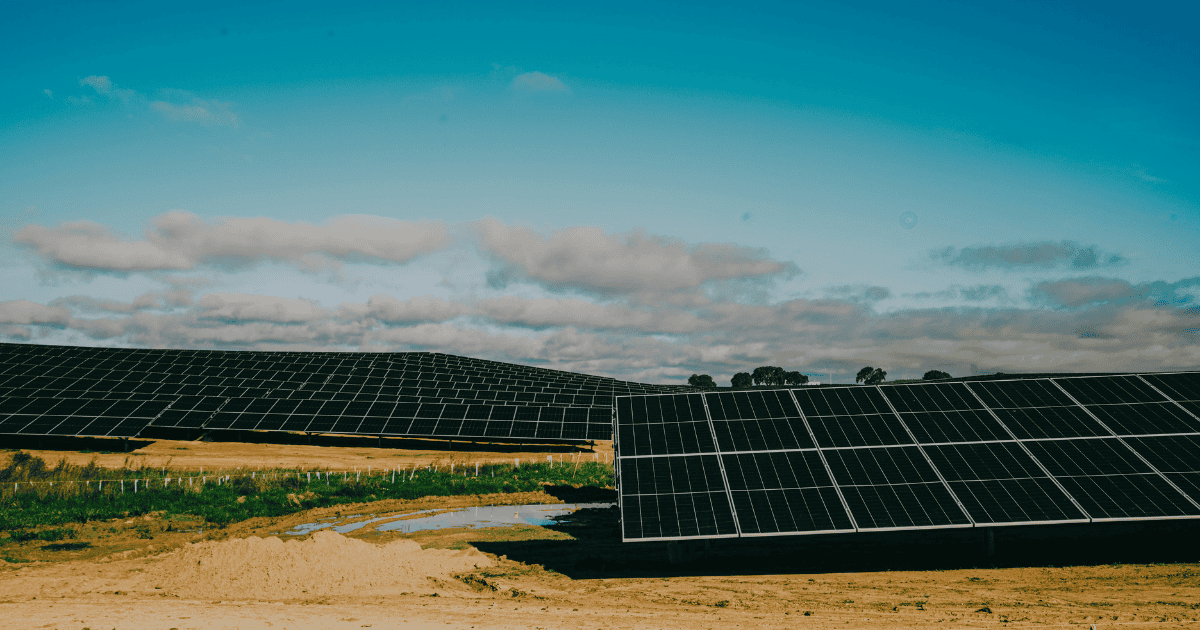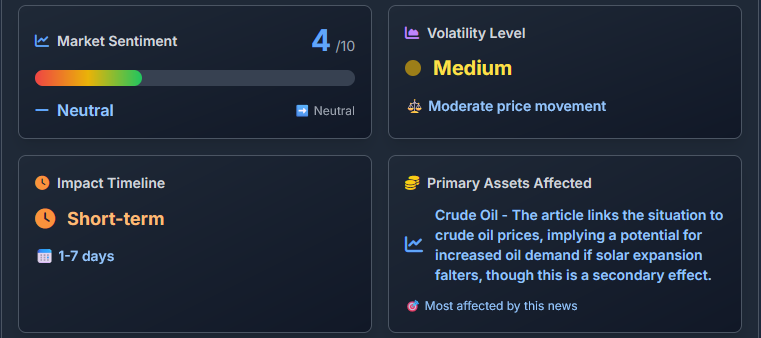
As solar tube wells proliferate across Pakistan's farmlands, slashing energy costs and boosting yields, unchecked extraction threatens to inflate food imports and strain public finances in an already fragile economy.
Pakistan's agricultural landscape is transforming under a cascade of solar panels, with roughly 650,000 tube wells now powered by the sun, up from negligible numbers just a few years ago Reuters. This shift, concentrated in the fertile Punjab province, has delivered immediate relief to cash-strapped farmers amid soaring diesel prices and erratic grid supply. Yet, as these installations enable round-the-clock pumping, they are accelerating groundwater depletion, raising alarms about long-term costs to food security, export revenues, and the national budget.
Agriculture remains Pakistan's economic cornerstone, contributing 24% to GDP and employing nearly 40% of the labor force. The sector's reliance on irrigation is acute, with over 1.2 million tube wells drawing from aquifers that replenish slowly in an arid climate. Solar's appeal intensified after 2023 power tariff hikes, which doubled electricity rates under an IMF-mandated bailout, and a plunge in panel prices driven by Chinese manufacturing. Farmers report returns on investment within five to six months, with one rice grower in Punjab saving 2 million rupees annually on fuel and power, equivalent to over four times the country's per capita GDP Reuters. These savings have spurred expansions: rice paddies, notoriously water-hungry, grew 30% from 2023 to 2025, while less thirsty maize fields shrank by 10%, per U.S. Department of Agriculture figures OilPrice.
The financial upside is clear. By ditching diesel at around 280 rupees per liter and unreliable grid connections, farmers have stabilized operations, lifting yields by 15-20% in staples like wheat and rice through consistent "pulse" irrigation multiple times daily ScienceDirect. This could narrow Pakistan's $6 billion annual edible oil and grain import bill, easing a trade deficit that devoured foreign reserves last year. Rural communities, hit hard by 2023's poverty spike to record levels, are pooling funds for shared panels, fostering micro-economies that inject cash into seeds, fertilizers, and local markets.
However, the solar-driven pump frenzy is exacting a hidden toll on water resources, with fiscal repercussions looming large. Punjab's water table has sunk below the critical 60-foot mark across 6.6% of the province as of 2024, a 25% rise since 2020, while zones exceeding 80 feet have more than doubled in extent The Express Tribune. At least 10 cities now face severe shortages, coinciding directly with the solar boom's acceleration (Related by Punjab Irrigation Department data, Arab News). Without fuel or tariff constraints, extraction has surged 30% in many cases, fueling fears of aquifer collapse that could slash crop outputs by 20-30% within a decade and ignite food inflation already hovering at 25% IWMI.
The economic fallout could cascade beyond farms. Agriculture powers $3.5 billion in annual exports of fruits, cotton, and vegetables; a water crunch might force reliance on pricier global supplies, widening the current account gap and pressuring the rupee. On the fiscal front, the solar exodus from the grid threatens a 45% plunge in agricultural electricity sales by year-end, starving state utilities of revenue while saddling them with "capacity payments" to idle power plants, funded by borrowing from creditors like China The Express Tribune. This mismatch risks tariff hikes for remaining users and derails IMF talks on energy reforms, potentially adding billions to public debt.
Government officials are divided. Punjab Irrigation Minister Muhammad Kazim Pirzada concedes the trade-off: solarization is beneficial for the environment as clean energy, but it is also eroding the water table OilPrice. Federal Power Minister Awais Leghari counters that claims of depletion are misconceptions, insisting extraction volumes mirror diesel eras despite evidence of expanded cultivation Reuters. The World Bank and experts like environmental scientist Imran Saqib Khalid urge swift action, warning that absent regulation, Pakistan courts a profound water crisis imperiling food security and cropping patterns Reuters. Energy economist Ammar Habib highlights the scale: 400,000 wells switched from grid power, plus 250,000 new ones since 2023 Reported by Reuters.
Remedies are emerging, though implementation lags. Punjab has launched aquifer recharge pilots at over 40 sites, injecting treated water to restore levels, and is refurbishing colonial-era canals like the Ravi Siphon to prioritize surface flows over groundwater Reuters. Calls grow for digital mapping of all tube wells, AI-enabled sensors for real-time usage tracking, and tiered incentives linking solar rebates to efficient practices. Financial lenders could embed sustainability clauses in loans, mitigating risks for investors.
Pakistan's solar story underscores a broader tension in emerging markets: green transitions yield quick wins but demand safeguards to avert boomerangs. With monsoons projected to weaken 20% by 2030 and India's April suspension of the Indus Waters Treaty adding transboundary strain, the clock ticks. For global funds eyeing South Asia's renewables, this pivot tests whether fiscal prudence can temper technological zeal, ensuring solar illuminates rather than drains the path to prosperity.

